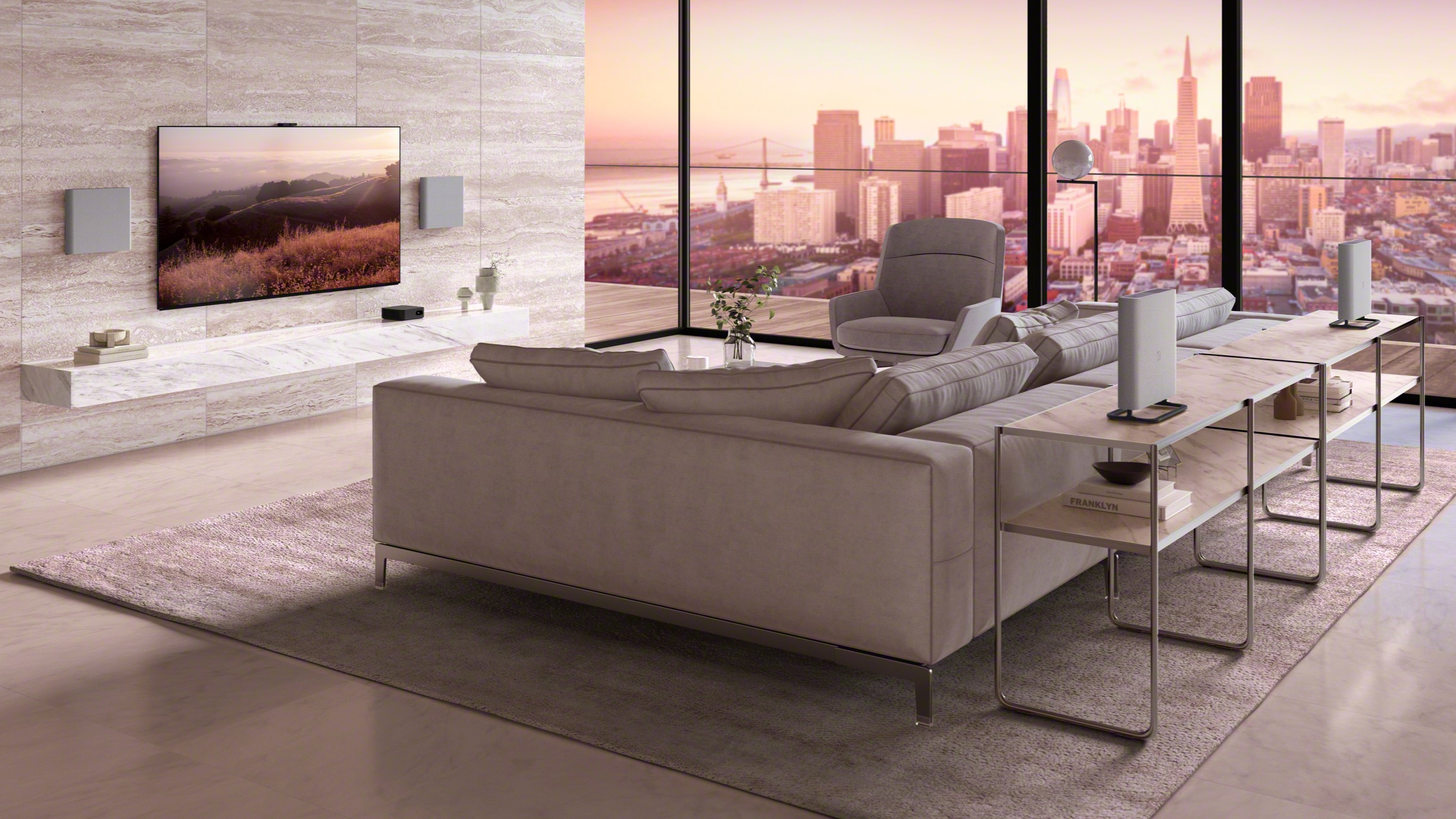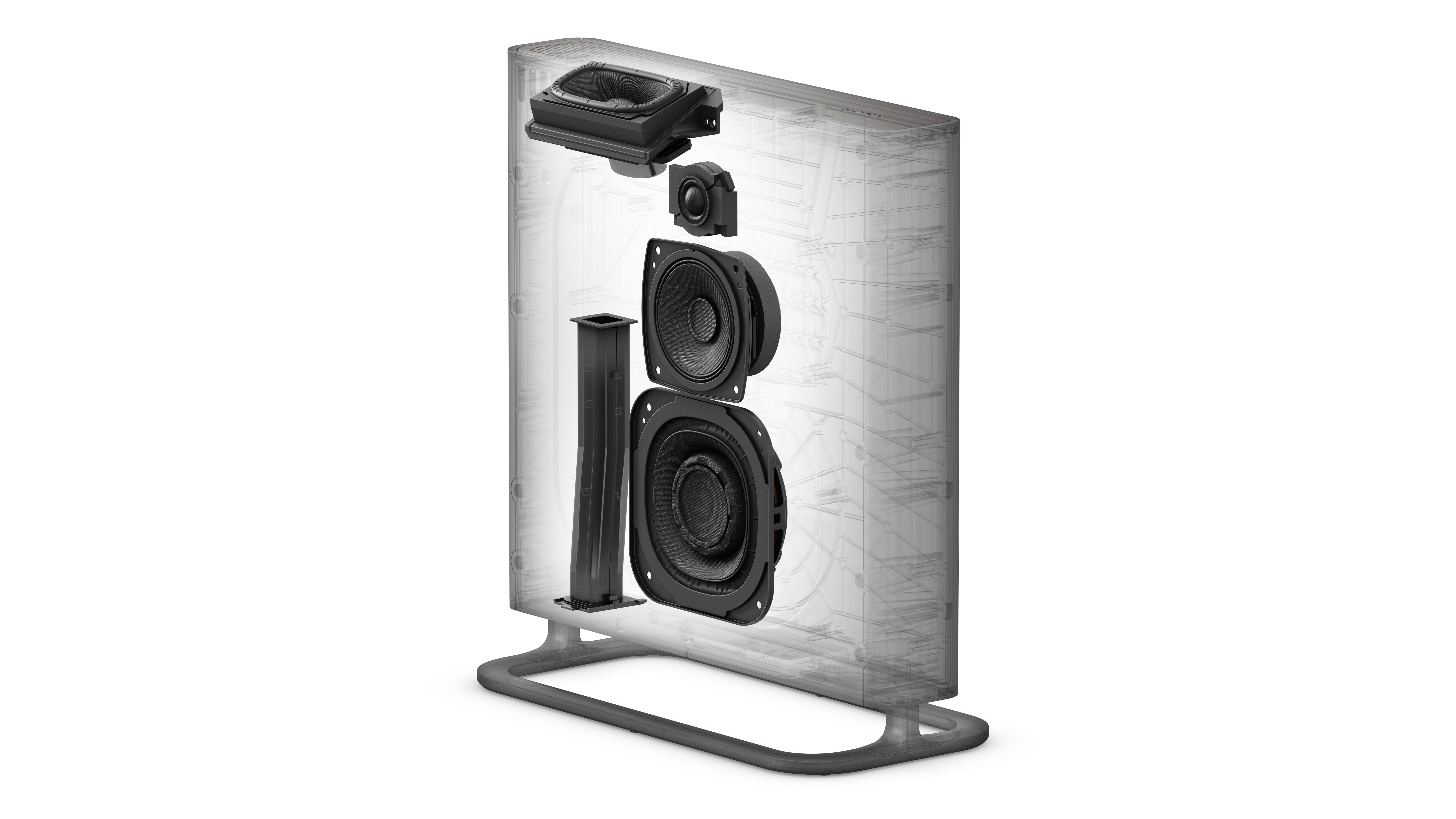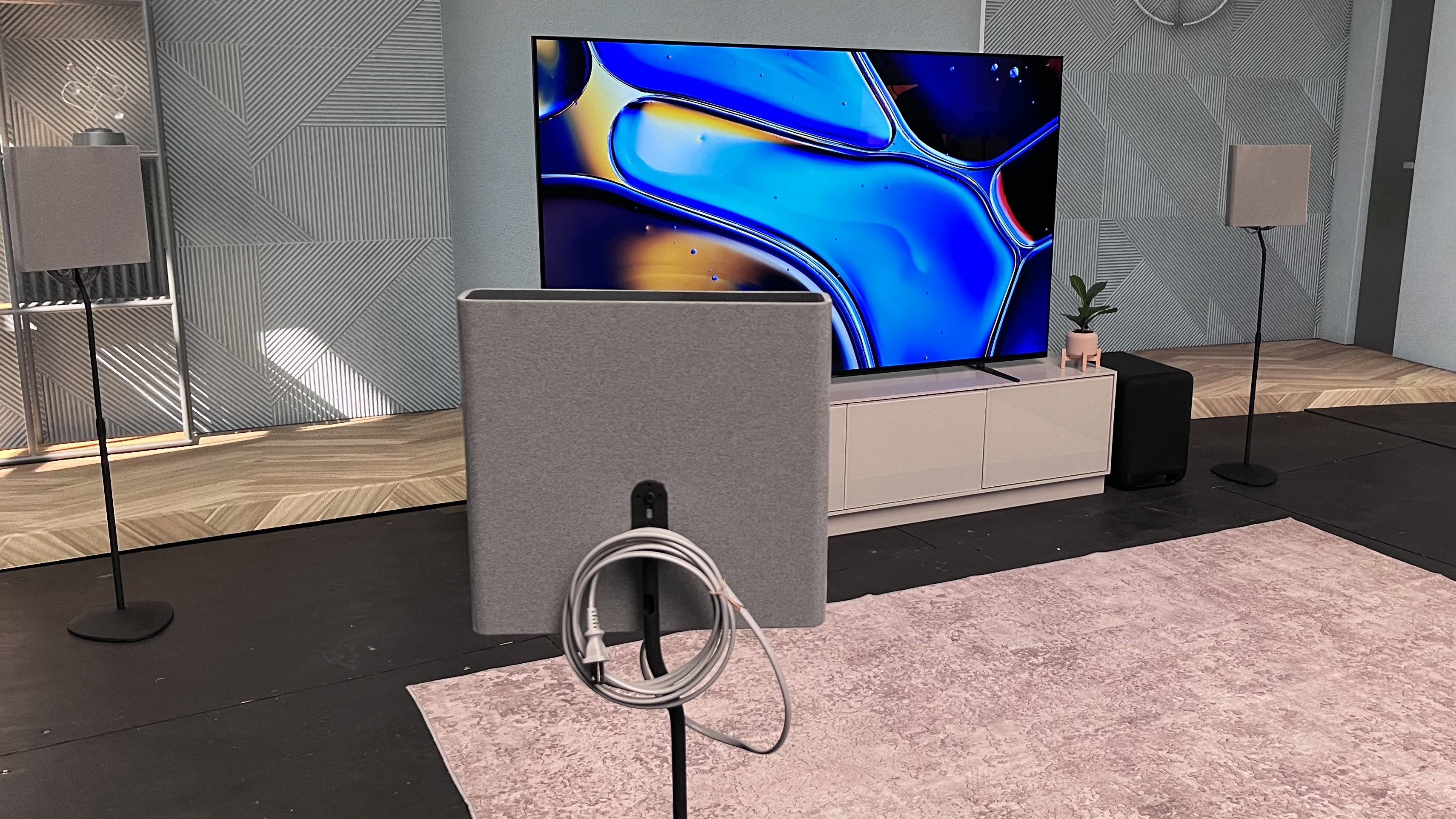I listened to Sony’s new Bravia Theater Quad system, and it's full-fat Dolby Atmos without wires
Wireless surround sound with Atmos

Sony recently launched its 2024 TV and audio product lineups, with the event being held at Sony Studios Pictures in Los Angeles (Culver City, to be exact). I had a chance to get solid eyes and ears on time with the new products at the event, and one of the highlights was the Sony Bravia Theater Quad, a 4-channel (4.0) wireless speaker system alternative to the best Dolby Atmos soundbars.
The Bravia Theater Quad is Sony’s replacement for its Sony HT-A9 four-speaker wireless surround sound system. Like the HT-A9, the new system consists of a quartet of wireless speakers and a compact control box with 4K 120Hz-capable HDMI 2.1 ports for connecting a TV and a second HDMI source. At $2,499 / £2,499 (roughly AU$3,883), Sony’s new all-in-one is notably more expensive than the HT-A9’s $1,799 / £1,599 / AU$2,499 launch price, but it offers a much-improved design and up-firing speakers to deliver height effects in Dolby Atmos and DTS:X soundtracks.
Each Bravia Theater Quad speaker contains a front-facing three-way driver array in addition to its up-firing Atmos driver. There’s a bottom-firing bass reflex port to enhance bass output, and the system can also be paired with Sony’s optional SA-SW5 and SA-SW3 wireless subwoofers. At just 2 inches (55mm) deep, the gray, square-shaped speakers can be easily and discreetly wall-mounted, and they come with a dual-purpose stand/bracket to accommodate multiple installation options.

Sony says its wireless speaker package has a new dual antenna frequency hopping system that provides a more stable wireless link between the control box and speakers than its previous system. It uses 360 Spatial Sound Mapping, a form of processing that creates “phantom speakers” between the actual ones to create an even more immersive “dome” of sound, and a Sound Field Optimization feature calibrates audio output based on speaker position, listening position, and your room’s layout and acoustics.
While the system lacks a center channel speaker, an Acoustic Center Sync feature lets you make a hardwired connection between the control box and a compatible Sony TV so the TV’s speakers can deliver center channel information in soundtracks. It also supports the new Voice Zoom 3 feature, which uses AI to detect voices and intelligently boost the volume so dialogue remains clear. This processing also applies to non-surround-encoded content, with a new upmixer creating surround sound from stereo soundtracks.
Atmos goes Quad
The room Sony had the system set up in was a sound recording studio on the Sony lot, so it was a good acoustic environment for listening to demos of both the Bravia Theater Quad and the new Bravia 9 soundbar. With the control box plugged into the new Sony Bravia 9 TV, the TV's Acoustic Center Sync feature made it a full 5.1.4-channel system, with the bass handled by a SA-SW5 wireless subwoofer.

With support for DTS:X and IMAX Enhanced along with Dolby Atmos, the Bravia Theater Quad system is ready to handle any soundtrack format you toss its way, and the movie clips Sony played during the demo had a dynamic quality and strong immersive effect. Four up-firing speakers are already an excellent starting point for Dolby Atmos, and the system’s 360 Spatial Sound Mapping made movies sound even more seamless and full.
Get daily insight, inspiration and deals in your inbox
Sign up for breaking news, reviews, opinion, top tech deals, and more.
Having previously heard 360 Spatial Sound Mapping in action at a Sony AV receiver launch event in 2023, I was aware of how effective the processing could be, even in a full-scale custom-installed home theater. But it was also very effective on the Bravia Theater Quad.
Soundbar or Theater Quad?
Sony’s new Bravia Theater Quad makes the most sense for Sony TV owners who can use its Acoustic Center Sync feature to add center channel speaker capability to the system. But the Theater Quad is also designed to work without a center channel speaker, with the system’s processing creating a phantom center channel for dialogue in much the same way it creates virtual speakers between its physical 4.0.4-channel speaker array via 360 Spatial Sound Mapping.
The flat design of the Bravia Theater Quad speakers is, to my eyes, an improvement over the semi-cylindrical speakers used in the previous HT-A9 system, and they also better lend themselves to wall-mounting for a less visually intrusive installation. On-wall speakers, which provide generally better sound quality than in-wall speakers, are popular in the custom home theater world. With the Bravia Theater Quad system, you not only get on-wall capable speakers with a flat design, but wireless connectivity to ease installation.
At $2,499 / £2,499 (roughly AU$3,883), the Bravia Theater Quad system costs almost twice as much as the Sony Bravia 9 soundbar, the company’s new flagship 13-speaker model that also features 360 Spatial Sound Mapping. Is it twice as good as the Bravia 9 ‘bar? That model also sounded excellent in Sony’s demo, so I can’t say the Quad beats it. The Bravia 9 and Bravia Theater Quad are different solutions for different tastes, and having heard both, I can recommend both.
You might also like

Al Griffin has been writing about and reviewing A/V tech since the days LaserDiscs roamed the earth, and was previously the editor of Sound & Vision magazine.
When not reviewing the latest and greatest gear or watching movies at home, he can usually be found out and about on a bike.